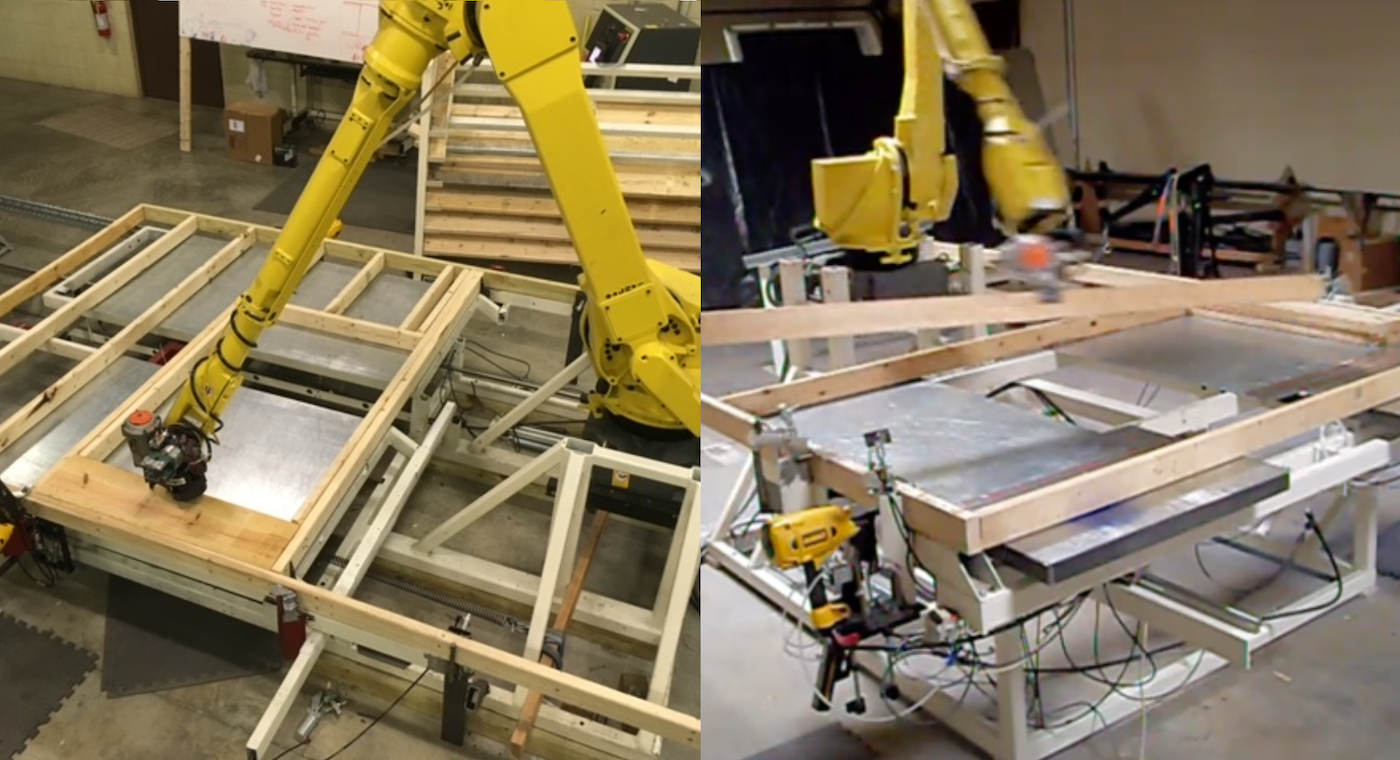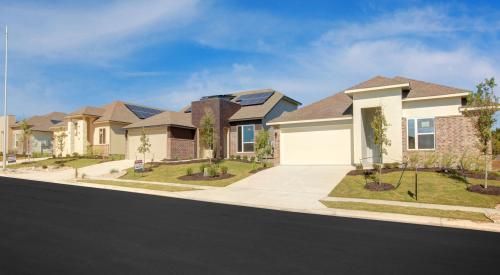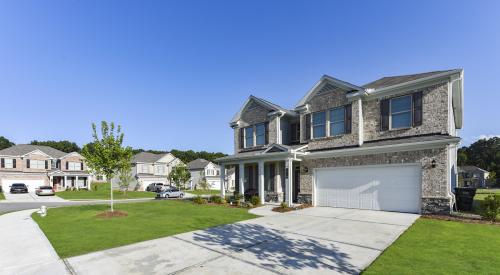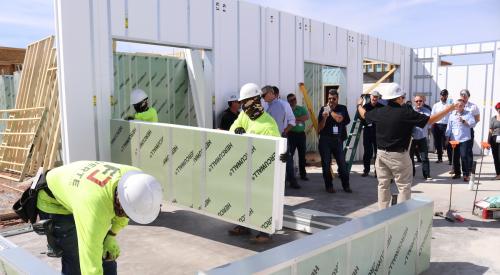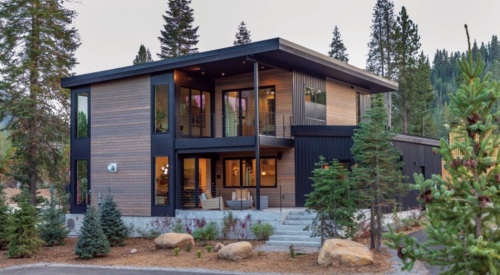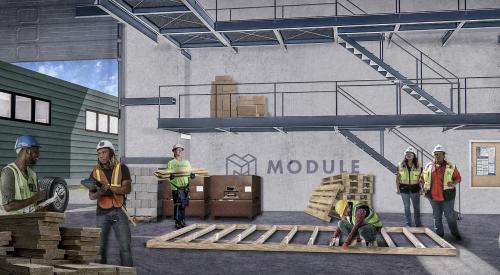Jeff Williams has a bold vision for the future of home construction.
“We’ll build houses with robots,” says Williams, founder and CEO of Williams Robotics in Burlington, N.C. “A guy drives up with a robot on a truck and materials on another truck, he sets it up, mashes a ‘go’ button, grabs a cup of coffee, and the house gets built.”
Can Robots Build Houses?
Williams doesn’t think that will happen in just a few years’ time. But in 25 years? He’s optimistic. “I truly think that’s within our lifetimes,” he says, “with enough money behind it and enough early successes.”
Early success is what his company, Williams Robotics, has been working to achieve. The startup has developed a prototype robot that can assemble wall panels in offsite manufacturing facilities.
RELATED: 90 Housing Leaders Outline Their Biggest Concerns, Opportunities in Homebuilding
From auto assembly line to homebuilding
Williams Robotics’ software converts an architect’s drawing into instructions that tell the robot what to do. The company has outfitted a Fanuc robotic arm, the kind seen on an automotive plant’s assembly line, with tools and fixtures that handle boards and nail guns with carpenter-like dexterity. The robot assembles 2x4 or 2x6 stud walls ranging in height from 7 to 10 feet, while leaving rough openings for windows and doors.
Compared to manual assembly, “the robot builds the walls faster, with fewer people, and with high quality,” says Walker Harris, co-founder and president, Williams Robotics.
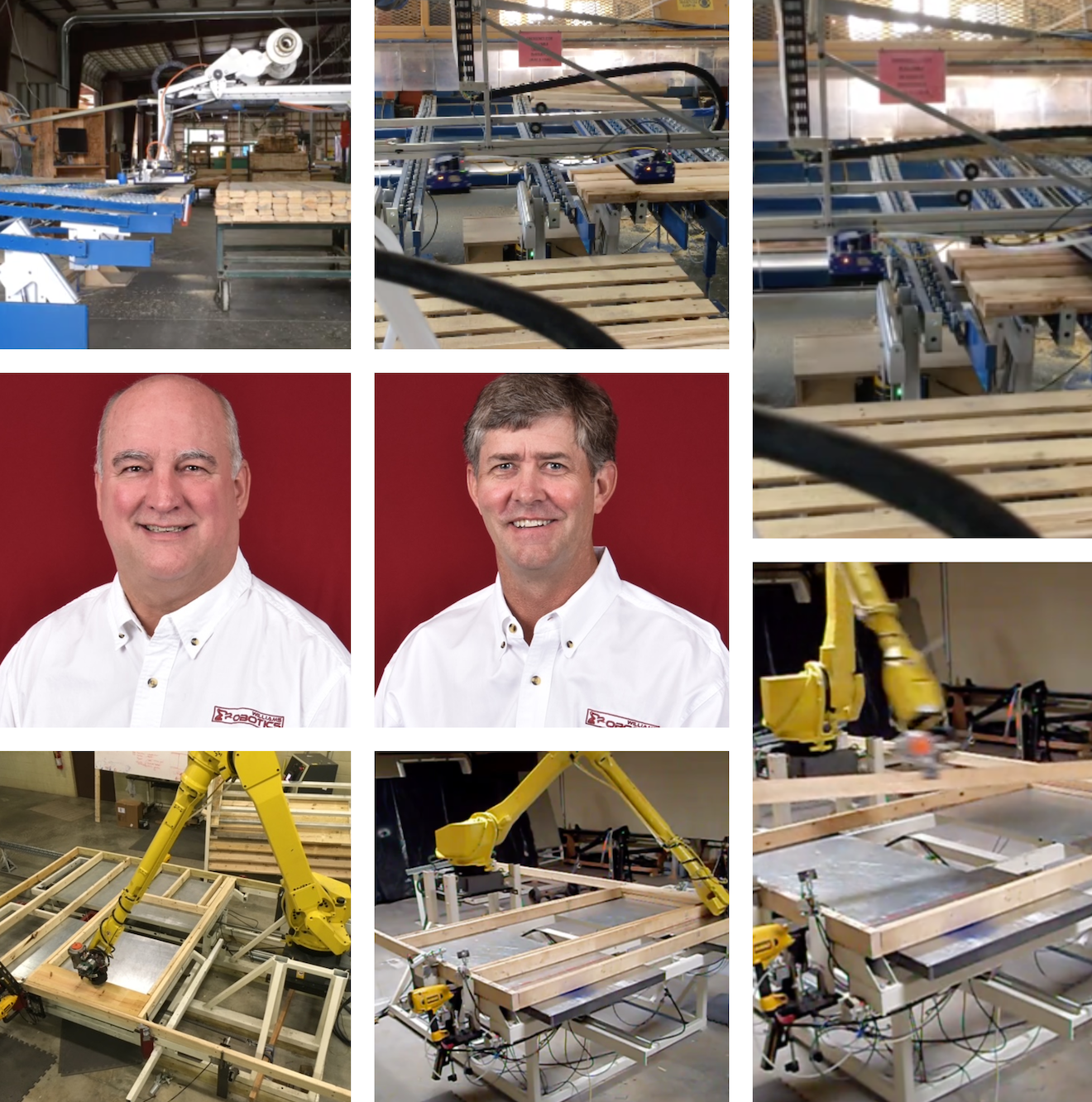
The Williams bot builds two feet of wall per minute. It needs just one or two workers, compared to the six to eight people it takes to construct a wall in a manufacturing facility. And, Williams says, it will save builders around $2,400 to $2,700 per house.
And that has generated plenty of interest among builders. “They say, if it does that, then yes, we’ll buy it,” Williams says.
The ROI of using robots to build houses
While it won’t be an inexpensive piece of capital equipment—its price tag hasn’t yet been determined but will likely be around $1 million—the savings that production builders realize will offset that investment in less than two years, Williams says.
For now, Williams and Harris are intentionally targeting offsite facilities. The robot can easily fit within these plants’ existing workflow, constructing wall panels that then move onto the next station, typically exterior sheathing.
But the wall-building bot is just the start. Williams Robotics plans to follow it up with robots that build roof trusses and floor trusses. Beyond that, it might roboticize sheetrock, siding, and shingle installations.
There’s a common thread among each of these components, Williams says: “It’s always done pretty much the same way on any house, but it’s also different enough every time that it’s hard to automate the process,” he says. “But all these processes can be fully automated. Our vision is to do all the things that are both complicated and repetitive.”
Before they can realize that vision, however, their prototype has to pass its first in-the-field test at an offsite facility for several months. Williams and Harris will see how the robot fares when it uses real wood to create real walls for real home construction—and they’ll get clear numbers on its speed, reliability, and accuracy.
Testing the prototype homebuilding robot
The prototype, developed in the company’s 5,000-square-foot facility, follows two previous prototypes that Williams frankly describes as “dismal failures.” The earlier iterations struggled with quality, size, and speed. The third prototype nailed all three.
Williams and Harris haven’t yet identified the testing plant, but they don’t think that’ll be a problem. “We’ve had several builders say, ‘Make sure you ask me first,’” Williams says.
Williams Robotics Demo from Walker Harris on Vimeo.
Still, there’s another hurdle they have to clear first: raising money. So far the company co-founders have bootstrapped their startup, which employs six people. To get their alpha product ready for the beta phase, they need to raise capital. They’ve been in talks with several investors, Harris says.
In just the few years since Williams and Harris first teamed up, they’ve seen a sea change in how industry insiders respond to their idea. “We were told there’s no way the robot will be able to do that,” Harris says of the early doubters. “Not many could visualize it.”
Labor shortage drives demand for homebuilding automation
The partners knew that automated construction represents a seismic shift for the industry. A few companies offer robotic construction technology—such as Europe’s Randek and Weinmann and New Zealand’s Spida Machinery—but it’s still a nascent concept.
These days, the men behind Williams Robotics get a different reception. “Now we’re not doing the chasing,” Harris says. “Now we have a lot of eyes on us to see how our prototype does.”
There’s a reason for that different response, Harris believes: the shortage of labor, especially highly skilled labor. “The industry hit a breaking point,” he says. “The industry realized labor is not what it used to be and it’ll only get worse. So we have to figure out different, innovative ways to hit our production goals.”
For his part, Williams is no stranger to the challenges of a startup. After a decade as an aeronautical engineer at NASA, he spent 15 years developing robots to dispense prescriptions in retail pharmacies. That company, Parata, grew from five staffers to 500. About 10 years ago, Williams, a self-proclaimed “startup kind of guy,” left Parata in search of his next venture.
While “wondering what I’d do next with my life,” Williams says, he drove around and saw some houses under construction. He thought, “We’ve been building houses the same way for 200 years. Maybe we could use robots to do it.” He then conducted research to confirm that “maybe” could be “yes.”
A few mutual friends (and Parata co-founders) suggested that Williams meet someone who actually knew how to build houses: Harris, a custom builder with 30 years’ experience.
Today, Harris and Williams share the same vision for building innovation: “The big dream is to have this robotic arm mobile,” Harris says, “so it can show up on a job site and build.”


